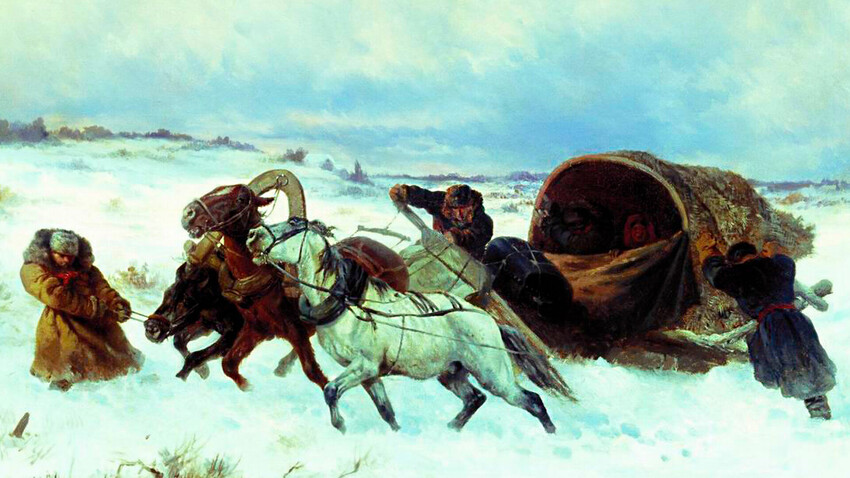
Troika in winter, 1883, Nikolai Sverchkov
Tretyakov Gallery"If a Russian coachman has had an extra shot or two [of vodka], you would not force him to ride ‘in the German way’; that is, a small trot. Instead, he will be shouting, singing songs and driving his carriage until he is asleep and the reins fall out of his hands," wrote historian Mikhail Zagoskin.
Drunk coachmen have always been a feature of Russian society, and before the 1917 Revolution they were no less dangerous than today – even if the traveling speed was much lower. However, that was the least of threats a traveler faced while on the road.
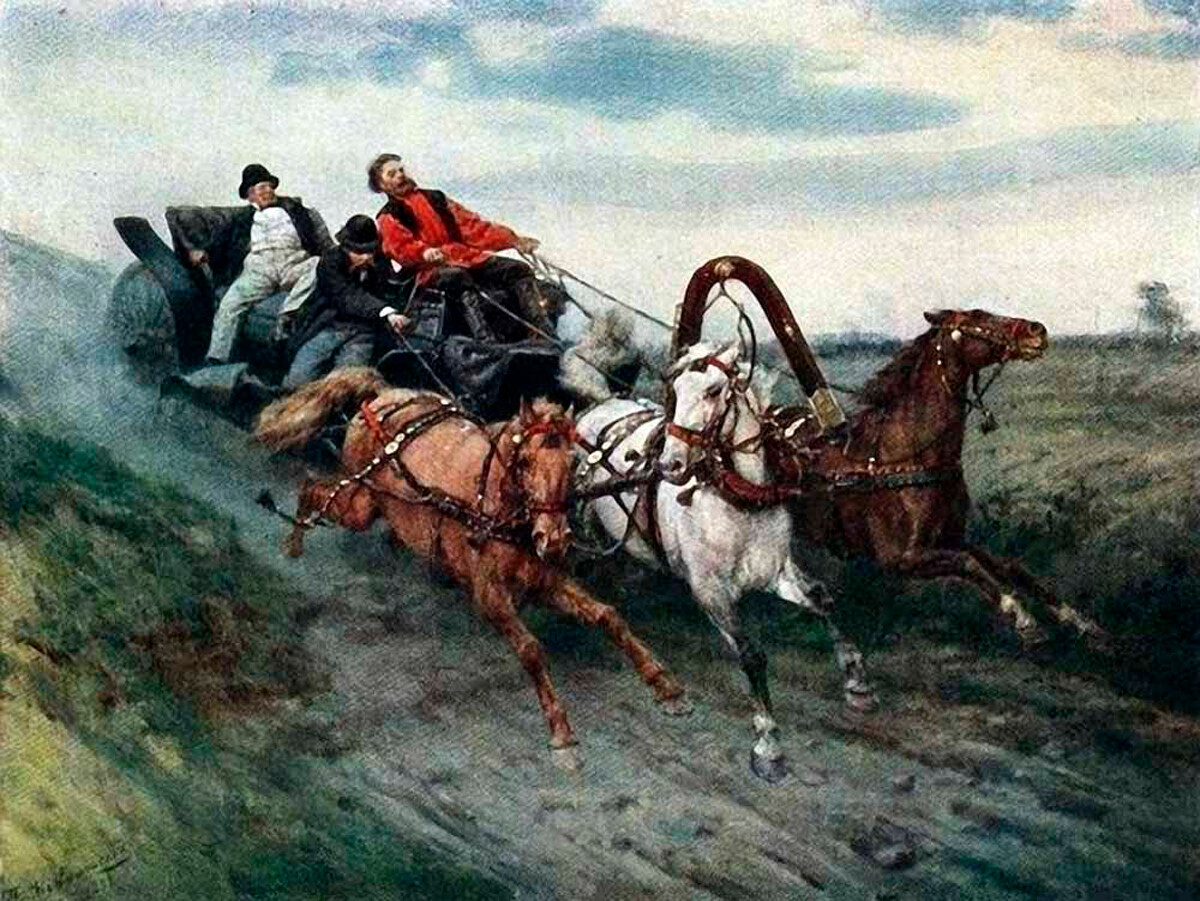
Pulling the reins, 1884, Pavel Kovalevsky
Public DomainHistorian Vladimir Korshunkov cites a case described in a Vyatka Region newspaper in 1914: "Two female school teachers, Kolchina and Bagaeva, were returning to Sarapul village for Christmas, with just one horse pulling their carriage. Near the village of Purga, an oncoming carriage transporting wine hit the teachers’ carriage which turned over and fell into the ditch, crushing the women and their driver. The peasants, who forced the teachers into the ditch, drove on as if nothing had happened. As a result, Kolchina suffocated to death, and Bagaeva was barely brought to her senses."
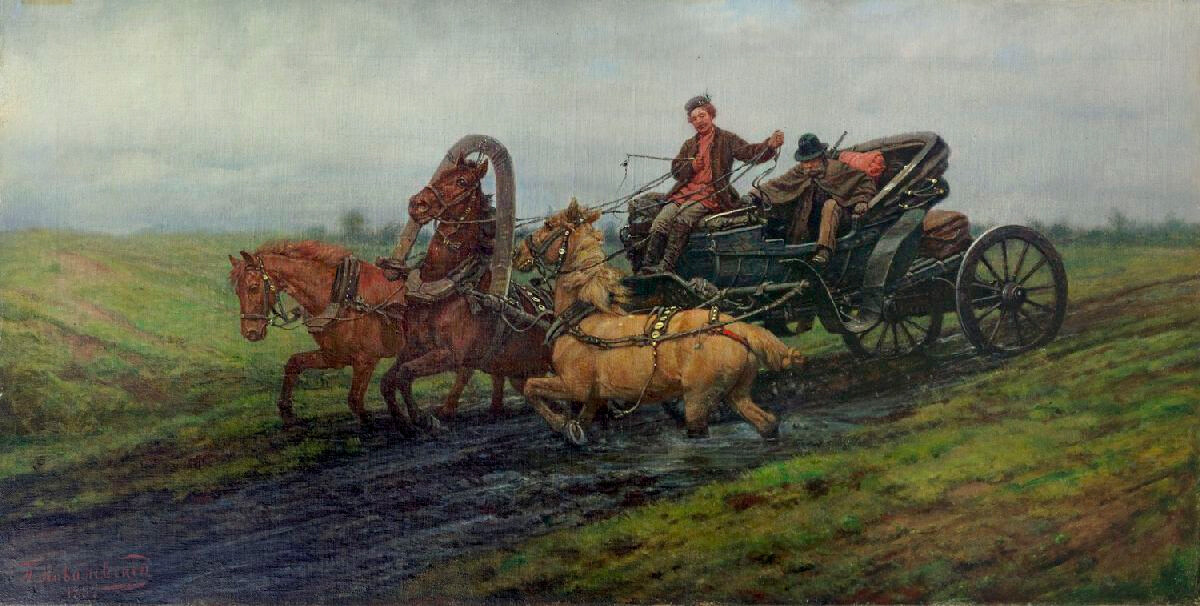
A troika stuck in the mud, 1889, Pavel Kovalevsky
Public DomainThe situation was especially dangerous if your carriage rolled over when it was loaded with heavy chests and baskets of goods that could crush and suffocate passengers. Riders on horseback also weren’t safe – the horse could buck and throw them out of the saddle. If one fell off his horse and snared their foot in the stirrup, death could come very quickly.
Powerful and influential people were not immune from tragic accidents either. In 1853, Alexandra Tyutcheva was in such a hurry while traveling from the Oryol Region to St. Petersburg in order to accept the title of lady-in-waiting at the Imperial court that her carriage turned over.
READ MORE: Russian coach drivers, who were they?
"I found myself together with my overturned carriage in a deep ravine, with a contused head..." wrote Tyutcheva. Road accidents happened even to the emperors – in 1836, the carriage of Nicholas I turned over near the town of Chembar not far from the city of Penza. The Emperor broke his collarbone but then walked 17 versts (more than 18 km!) to the nearest village.
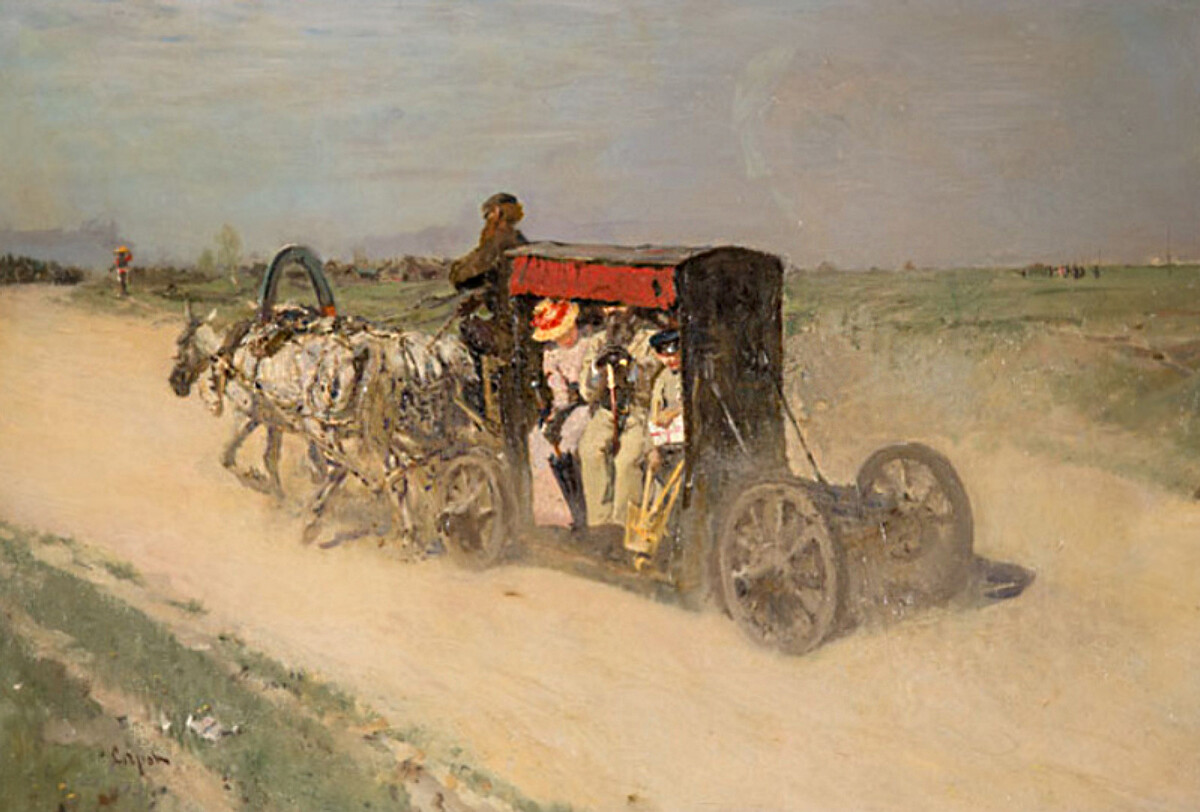
A 'lineyka' (public transport carriage) from Moscow to Kuzminki, 1892, Valentin Serov
Russian MuseumFlying out of a carriage was rather common, especially when going downhill and making turns. The carriages did not have modern brakes – wooden stoppers were placed under the wheels that only slowed the downward motion. Every descent, especially in winter, was a risky matter. In 1863, Ilya Repin was traveling from Kharkov to Moscow, and he later wrote: "It's scary to go downhill. [...] It happened that in icy conditions we waited for a long time under the mountain while the postal courier brought help from the postal yard. [...] How many such cases have there been on our road… After all, the highways are dug in deep ditches… And more than once, having accelerated, the unhindered carriage crashes and overturns into a ditch."
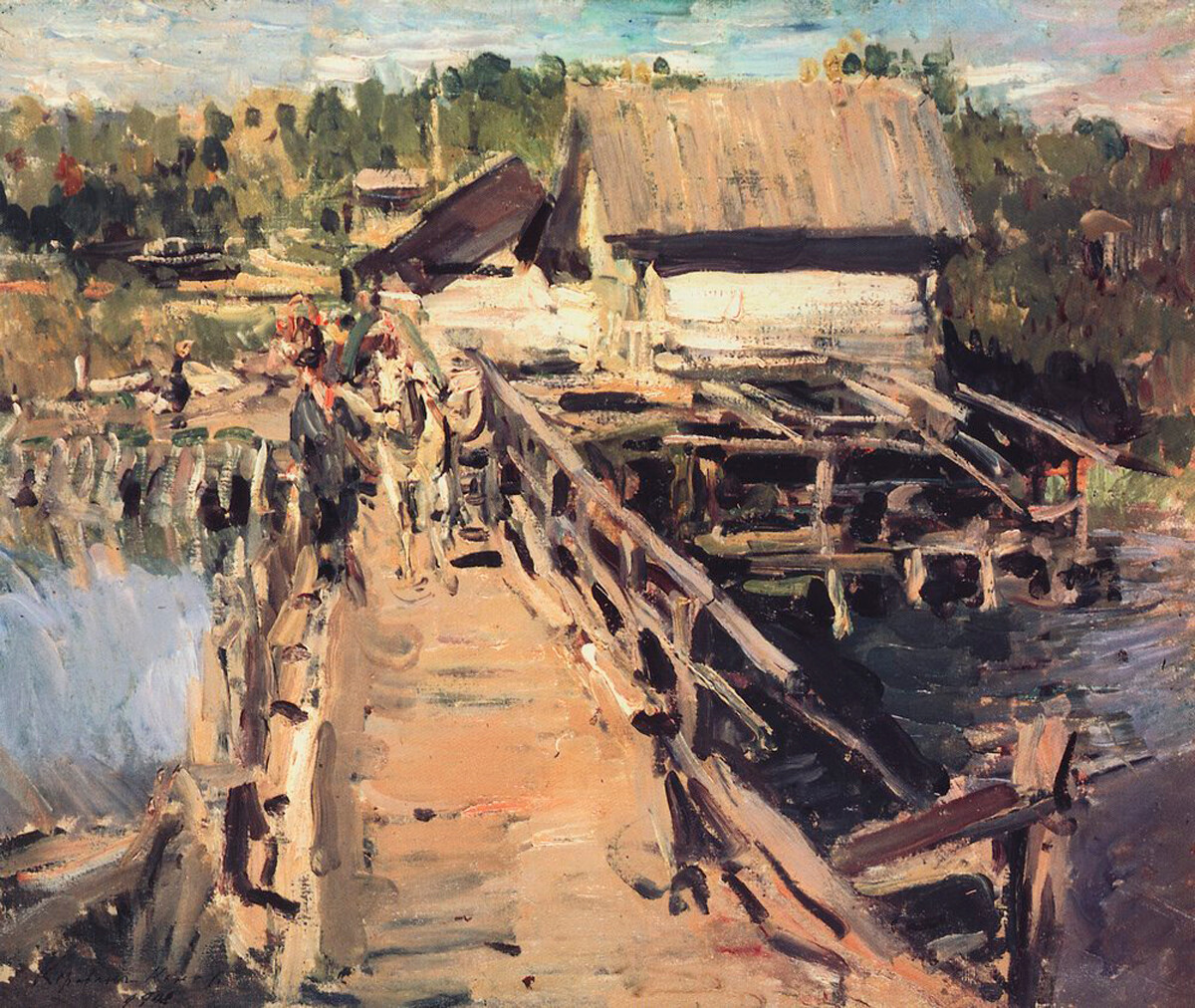
A bridge by the mill, 1908, Konstantin Korovin
Tver Regional Art GalleryIn the imperial era Russia’s bridges could simply be made out of boards, logs or even branches thrown onto the mud or over a swamp. "Only poles, barely hewn," wrote the priest Nikolai Blinov in 1861 about such "bridges" across swamps. Of course, you wouldn’t fall from such a bridge, but you could fall through or slip into the swamp. In that case, farewell to your carriage.
Full-fledged bridges across rivers were also dangerous. In 1723, Peter the Great warned his wife Catherine: "the bridges are high ... many are weak across the rivers… It is better that you cross on foot or travel in a carriole."
Now, imagine if there was a convoy of carriages like what happened to the landowner Elizaveta Yankova in 1803: "three freight carriages, three wagons on oxen and a one-horse carriage, an eight-seat line (a kind of light carriage – ed.) with six horses, a six-horse carriage, a four-horse carriage and a three-horse wagon." Such a caravan had to choose which bridges to go across, and the road became much longer.
In his book Russia in 1839, Marquis de Custine wrote that he met "a lot of bad plank bridges, one of which seemed to me very dangerous," bridges that were "uneven and dangerous, as they often lack the most important links."
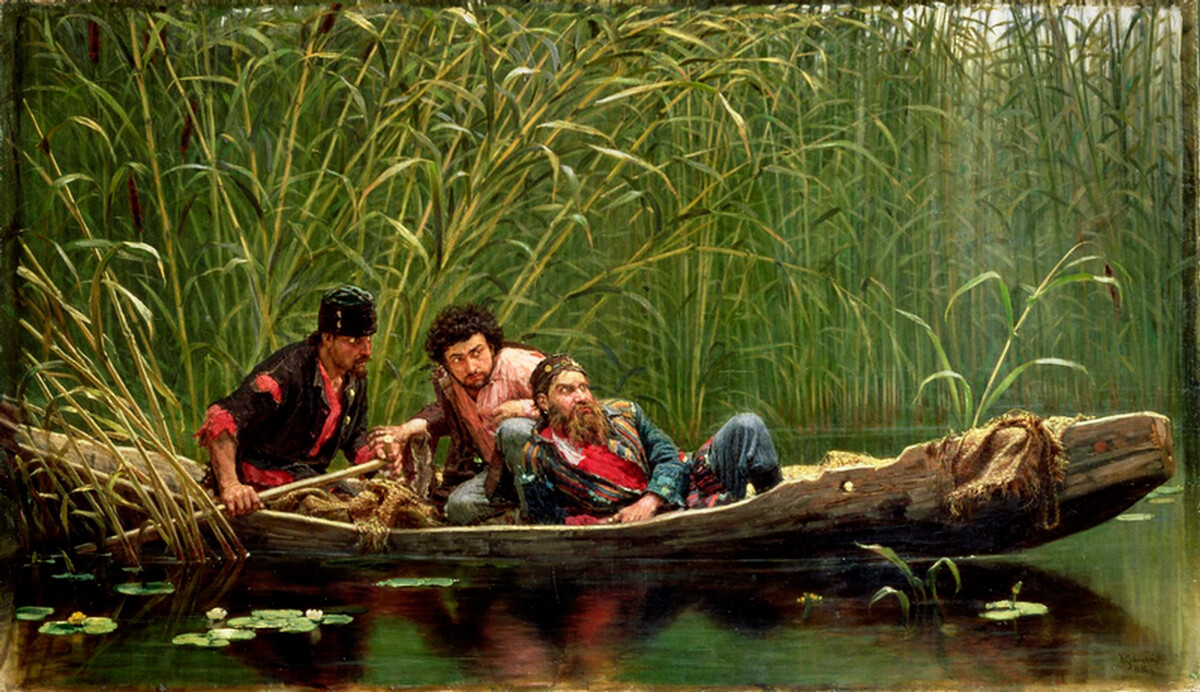
Suspicious people, 1882, Konstantin Savitsky
Russian MuseumBridges in Russia were havens for beggars and robbers – a bridge is a place where a lot of people pass, even in sparsely populated areas. In addition, as historian Korshunkov wrote in his article "Bridges, robbers, beggars" – "Road bridges were located in lowlands or ravines, where the path narrowed. Shaky bridge decks were especially dangerous at dusk, and people driving willy-nilly slowed down or got out of the cart. At that point it was easier for robbers to attack."
"He loves passing guests, but he meets them from under the bridge," one Russian riddle said about robbers. In popular folk culture, the bridge was a place where evil spirits lived. Therefore, superstitious peasants were quite afraid of bridges. It was possible not only to hide under the bridge, but also to use it as a place to store loot, and then even to dump into the river the bodies of the unfortunate travelers who resisted and were killed in the ensuing scuffle.
Robbers often hid and waited under bridges even in Moscow. In the 18th century, gangs stalked their prey under the arches of the All Saints’ Bridge, and then drank part of their stolen wealth in the pubs on the bridge itself.
Not only bridges were the preferred place for robbers. Until the middle of the 19th century, gangs of robbers hid in forested areas in the vicinity of major roads.
READ MORE: How did Russians fight crime before there were police?
Why did some Russians decide to embrace a life of crime? Peasants who fled from evil landlords, from the army, and from state taxes often became robbers because they were already existing outside the law. Soldiers who had mastered military arts and had accumulated weapons also saw much ‘opportunity’ in a life of crime.
Gangs were armed not only with guns but sometimes even with cannons, which allowed them to stop and rob large merchant wagons and caravans. The government didn’t turn a blind eye, however, and soldiers were sent to ferret out and destroy the robbers. Forests along roads and near to cities were cleared, but the authorities were never able to fully eradicate highway robbery.
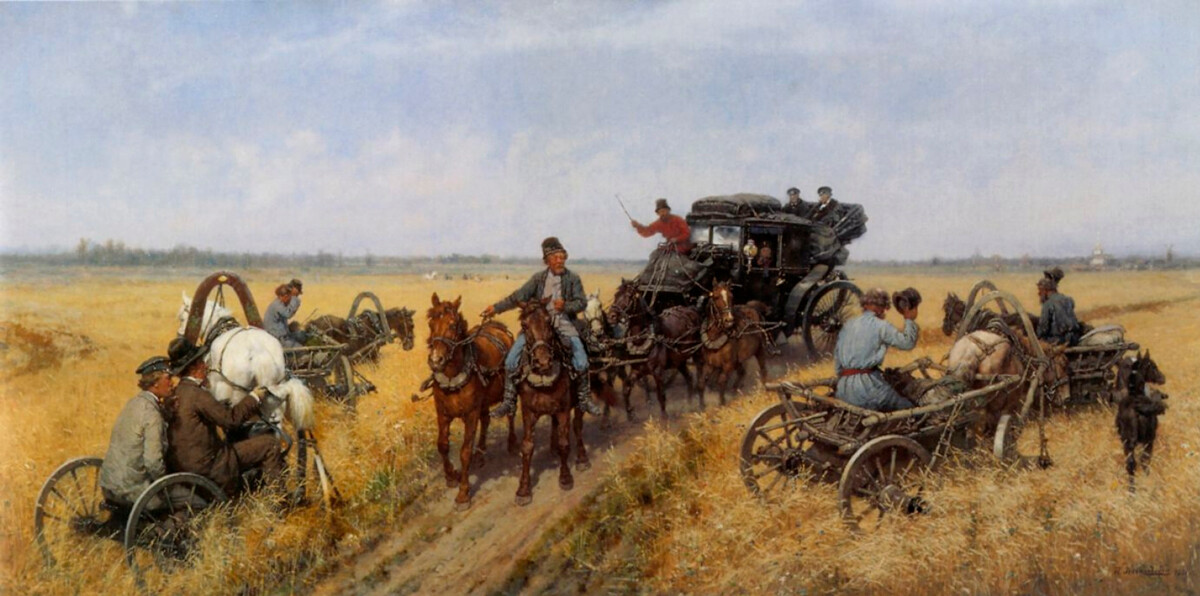
Detour of the Diocese, 1885, Pavel Kovalevsky. The civil servants (seen in the back of the big carriage) are on an inspection detour around one of the regions. Peasants are taking off their hats and make way for the civil servants.
Tretyakov GalleryTwo carts facing off on a narrow road – this has long been an eternal source of conflict over the course of human history. For horse-drawn carriages in imperial Russia, this actually was a big problem. Most carriages had several horses, wide shafts and axles, and it was difficult to pass each other on a narrow village or city street. As you might expect, no one wanted to give in and appear weaker. Well, if a whip just happened to hit someone else's horse – for example, in a fit of anger or in the bustle of traveling – then a fight would definitely ensue.
In his article, the historian Korshunkov quotes the following description about life in the Russian North: "One carriage is on its way, especially in winter, and then another one is coming in the opposite direction, but the situation arises that no one desires to turn away or let the other go by unimpeded; so, usually one either falls out of the sleigh or something breaks as a result of the collision. In such cases it’s not uncommon that one will smack another with a whip, and the victim will grab an axe, and hit the opponent..."
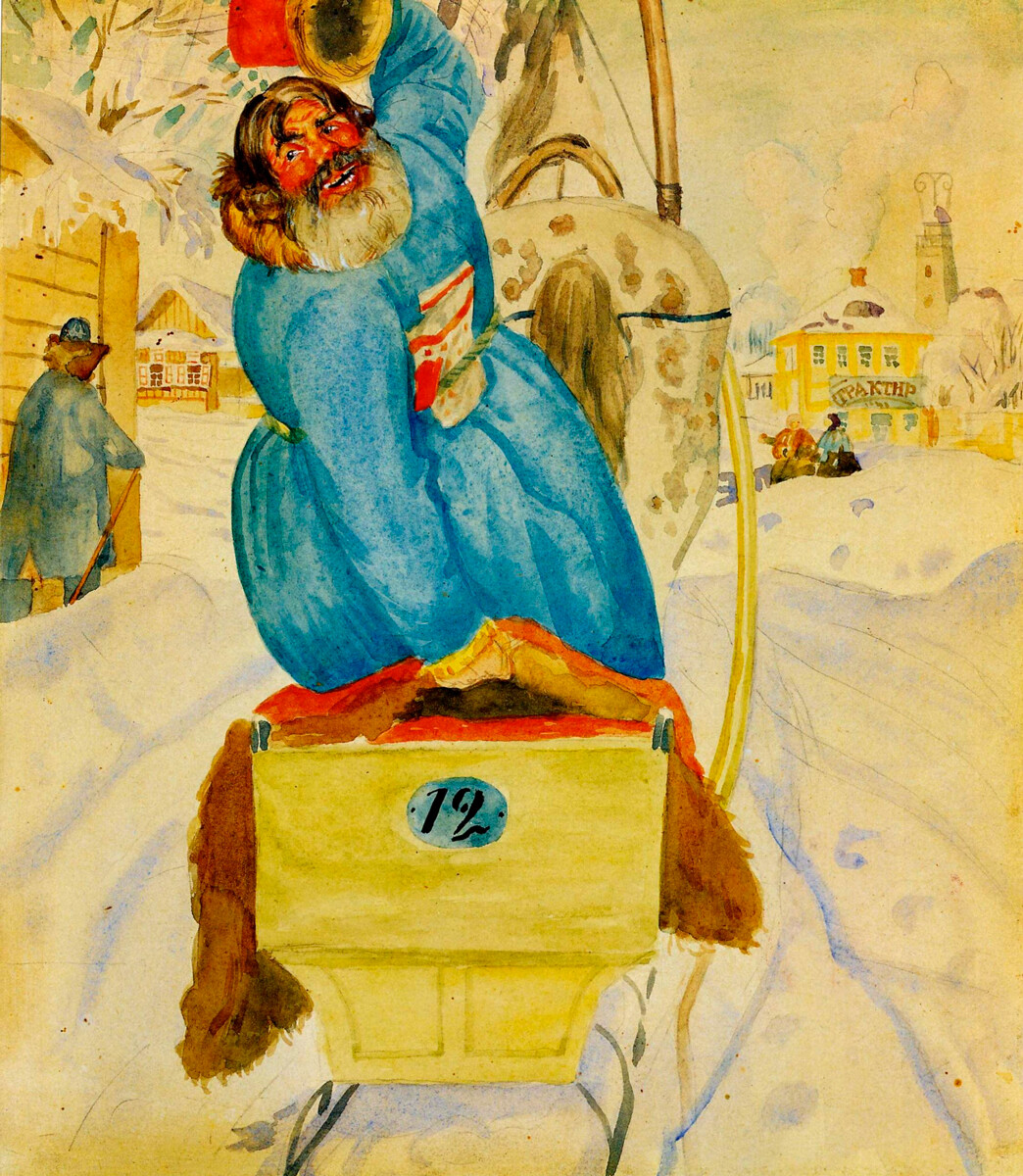
The coachman. From the series "Russian types", 1920s, Boris Kustodiev
National Museum "Kiev Art Gallery"Sometimes, it was clear who was obliged to concede. If a gentleman met a peasant, or a nobleman encountered another nobleman of lesser status, then the "lesser one" had to give way. However, this was especially difficult in winter, just after a blizzard when the road was covered by drifts or veritable walls of snow. The peasants had to first dig out and trample a sufficient space where their horses and cart could wait, and then the oncoming carriage would try to squeeze past them.
What happened if people of approximately equal social status collided? In that case they began to compare their ranks, to find out who held the higher rank, who had served longer and who was older than whom. If two peasants met on a narrow path, there were unspoken rules; for example, an empty cart was considered inferior to a loaded one. Also, when a very important person of high social rank was on their way, such as the governor of the local province, the coachmen would shout at oncoming carriages: "Turn away! Turn away!"
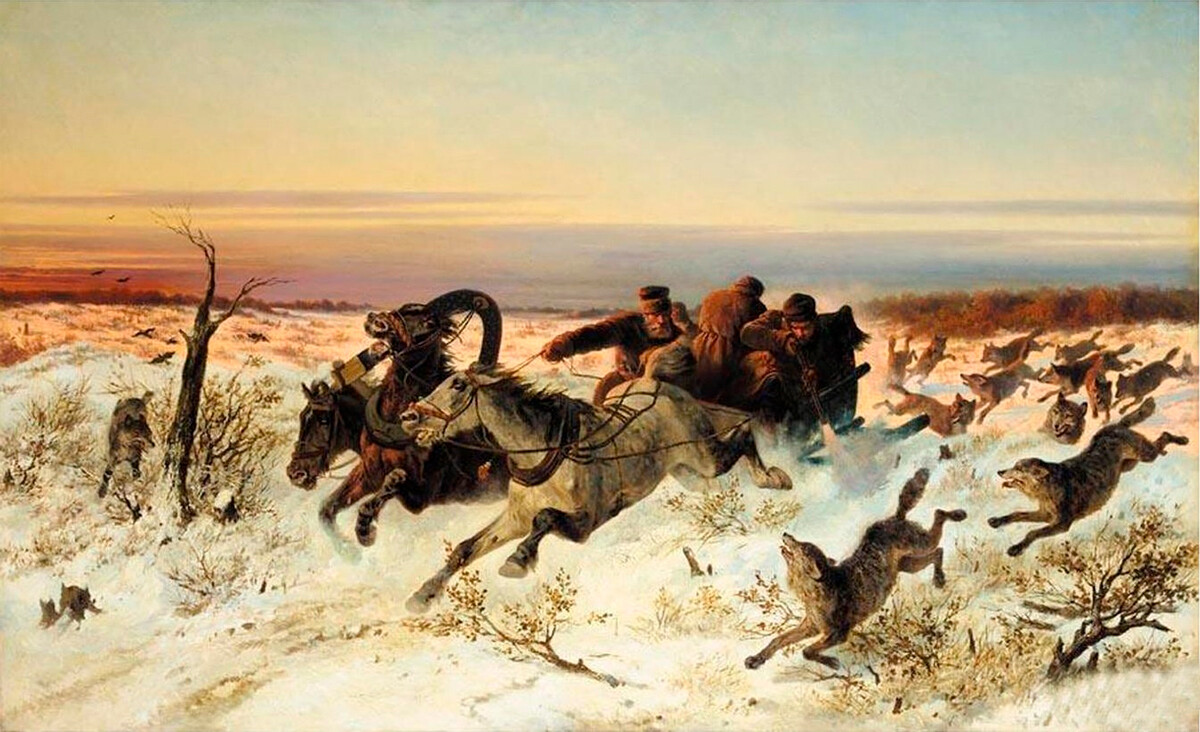
Attack of wolves, 1860, Nikolai Sverchkov
Public DomainIn addition to robbers, packs of hungry wolves threatened travelers with death and maiming on the road. Since many forest animals were sick with rabies, even the slightest bite could make the threat even more grave.
French surgeon Pierre de Lamartine visited the Russian North in 1653 and wrote that there were "so many bears and wolves that we were constantly in fear... expecting an attack every minute." However, the northern forests had so many wild deer and other potential food that wolves were not as hungry, and hence, not as ferocious, as in central Russia, where the wolves competed more with human hunters.
Historian Korshunkov cites an 1869 report from Vyatka province when a wolf bit two peasants – Matvey Shikhov and Kozma Mukhin. The wolf "tore through the skin to the bone on the first one’s head and bit his nose, left leg and arm, and bit the left cheek, temple and right hand of the second peasant." At first, both seemed to be fine, with no symptoms, but a few months later Kozma Mukhin died of rabies.
Wolves often strayed into villages, but most likely they were inclined to attack travelers. To scare them off, drivers lit bundles of straw, as well as fastened burning torches to their carriages and carts. Finally, as a last resort, the travelers carried pistols and guns.
In some parts of Russia wolves remained a problem until the 20th century. Historian Korshunkov describes how in the mid-1920s Seraphim, the Bishop of Dmitrov, was traveling near Kubinka station in the Moscow Region.
“The horse, meek and obedient, suddenly rushed and reared up so that the reins burst" – because it smelled the scent of the wolves, whose eyes were already shining in the dark along the sides of the road. "Wolves are running ahead of us, rushing back towards us. To frighten them, we usually lit some paper – they are afraid of fire. But the matches were damp."
As a result, one wolf chased after the carriage, but he was soon scared off by the humans shouting at him. Apparently, the wolves were not very hungry and there were not many of them, so Seraphim was lucky.
Even today, in remote regions of Russia, wolves still hunt in packs and pose a threat to pedestrians and villagers.
If using any of Russia Beyond's content, partly or in full, always provide an active hyperlink to the original material.
Subscribe
to our newsletter!
Get the week's best stories straight to your inbox